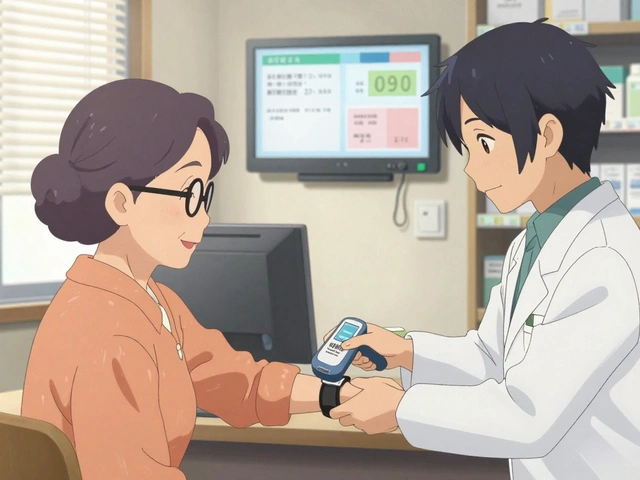Pyridoxine (Vitamin B6): What It Is and Why It Matters
Pyridoxine, better known as vitamin B6, is a water‑soluble vitamin that helps your body turn food into energy and makes neurotransmitters that control mood. If you’re feeling tired, irritable, or notice skin changes, low pyridoxine could be part of the problem. It’s tiny, but it plays a big role in brain health, hormone balance, and immune function.
Health Benefits and Common Uses
Most people take pyridoxine to support nerve function and reduce the risk of peripheral neuropathy, especially if they’re on certain meds like some epilepsy drugs. It also helps the body make serotonin and dopamine, which means it can lighten mood swings and improve sleep quality. Pregnant women often need extra B6 to curb nausea and support fetal brain development. Some studies link adequate pyridoxine intake with lower heart disease risk because it helps control homocysteine levels.
How Much Should You Take? Dosage, Food Sources, and Safety
Adults generally need 1.3–2.0 mg a day, depending on age and gender. You can get that amount easily from a balanced diet: think bananas, chickpeas, salmon, potatoes, and fortified cereals. If you prefer a supplement, most over‑the‑counter pills contain 25–100 mg, which is well above the daily need but still safe for short‑term use. The upper limit for adults is 100 mg per day; going higher can cause numbness or tingling in your hands and feet.
When you’re buying a pyridoxine supplement, look for products that list the amount per tablet and have third‑party testing. Take them with food to improve absorption, and avoid stacking high doses with other B‑complex vitamins unless a doctor advises it. If you’re on medication like isoniazid for TB or certain antidepressants, check with your pharmacist because pyridoxine can interact.
Signs of deficiency include cracked corners of the mouth, a sore tongue, skin rashes, and feeling unusually anxious or depressed. If you notice these symptoms and you don’t get enough B6 from food, a modest supplement (10–25 mg) can usually restore normal levels within weeks.
Bottom line: pyridoxine is a handy vitamin that supports nerves, mood, and heart health. Aim for a varied diet rich in B6 foods, and consider a low‑dose supplement if you’re pregnant, on specific meds, or showing deficiency signs. Keep your intake below 100 mg daily to stay on the safe side, and you’ll reap the benefits without the numbness risk.

Pyridoxine (Vitamin B6) for Arthritis: Can It Ease Joint Pain and Inflammation?
- By : Archer Hamilton
- Date : Aug 31 2025
Curious if vitamin B6 helps arthritis? See what the evidence says, safe doses, who might benefit, UK 2025 guidance, and how to try it without risky side effects.





